Digital Transformation isn't all about Technology
The future is always coming. New technology and IT solutions are emerging every minute of every day, ad infinitum, and organisations that pay attention to these changes are more adaptable to the market and their customers. In one word, they are successful.
Keeping up with technology, though, is only part of the equation. Ensuring your workforce integrates it into their day-to-day work is vital. This may seem obvious, but how many companies actually make continuous improvement or, better still, continuous change a priority? How many invest in training their workforce on
even the simplest change approach? In my experience, very few do. Vision is in short supply and short-termism is rife, especially when it comes to planning and allocating resources, better role design and organisational design.
And yet, the revolution came yesterday. The ability to master continuous change is a prerequisite to compete in the marketplace. This is not simply nice to be able to do. Adaptability is crucial – with technologies, with new approaches to design and develop people, because trying to make them fit into old ways of thinking and structures simply will not cut it.
Ask yourself these questions:
In a world where strategy and targets are constantly being redefined each day, how do you manage planning, fiscal control, and forecasting?
How can better management of activities and operational systems provide greater control, and in some cases, eliminate costs?
What skills does your organisation need to develop internally in order to respond to disruptive forces?
Are they continuously improving, continuously changing?
When reflecting on your answers, consider our 3Ts Model – Technology, Transition and Transformation, as featured in our book Sense and Respond: The Journey to Customer Purpose. While the model does not offer precise science, it is extremely useful in gaining an appreciation of the implementation effort needed in an IT transformation. The model will also help with those difficult conversations about effort and resourcing.
The first T is technology and comprises:
Commissioning
Customising
Testing
This takes 20% of the project effort.
The second T is transition. Points to consider are:
Communication
Demand analysis
Channel strategy
Business requirements
Process definition and transfer
Service-level agreements
Training
The project effort is equal to 30%.
The result of the new technology and the transition will simply result in business as usual, done better, but it does not have to be this way. New technologies that are brought in to transform a business can often be a catalyst for creating new products and services, and this calls for a transformation programme in order for staff to exploit the features of them. And this is where the most important T comes in.
The third T is transformation.
It should not be underestimated. It involves:
Developing new end-to-end measurements
Exploiting new tools and systems
Systematically collecting and acting on intelligence data.
The project effort is 50%.
This is the element that produces the most valuable and lasting improvements to the business. The transformation will allow your organisation as a whole to continuously improve, continuously change -- in other words, to be adaptive.
To find out how we can help transform your business, click below to book a time slot in the diary for a free discovery call.


